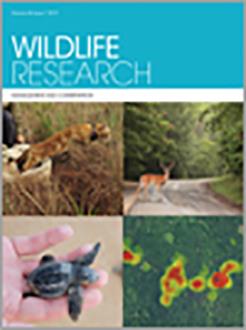Context. Animal activity patterns throughout the day constitute an important dimension of their ecological niche, and may have ecological and evolutionary implications; for an organism to be active during the day or night period, a series of conditions requiring different anatomical, physiological and behavioural adaptations must be met.
Aims. To study the anuran community in an area of Atlantic Forest in Brazil, to evaluate the species activity period as well as the diurnal and nocturnal detection probabilities of anurans, and to relate these activities to environmental variables such as air temperature, relative humidity and precipitation.
Methods. The anurans were sampled along 21 plot transects in the diurnal period and during a nocturnal period, with temperature and relative humidity measured in each plot. Species were considered predominantly diurnal or nocturnal if 35% or more individuals were recorded during one of these periods. Anuran detectability was estimated using single-season occupancy models, relating to environmental variables.
Key results. Of the individuals recorded, 12% were recorded during diurnal sampling and 88% were recorded during nocturnal sampling, with Ololygon agilis being the only species considered diurnal. The probability of detection was affected by only two variables (period and humidity).
Conclusions. The anuran community in the study area was essentially nocturnal, with only one species that could be considered diurnal. Additionally, detectability was higher at night, with humidity being the most important variable affecting species detection.
Implications. Surveys can be planned under climatic conditions that positively influence the probabilities of detection to improve the effectiveness of monitoring species and/or anurans community.





